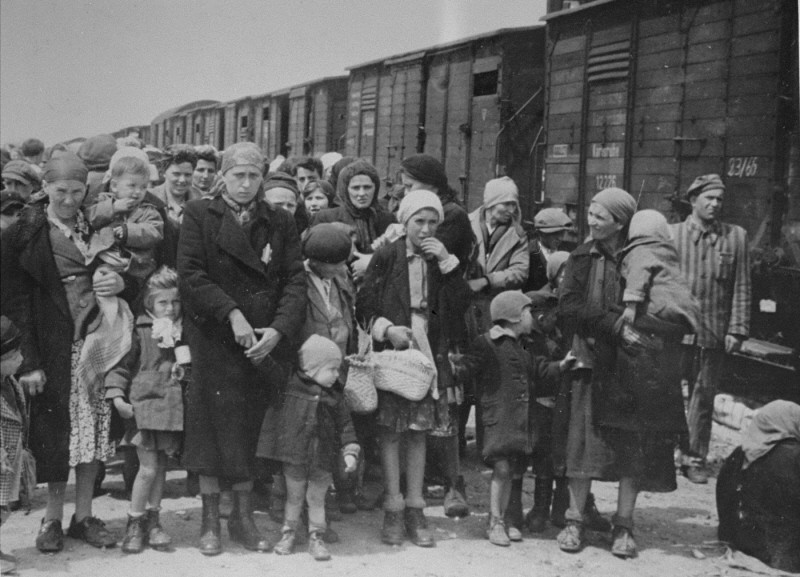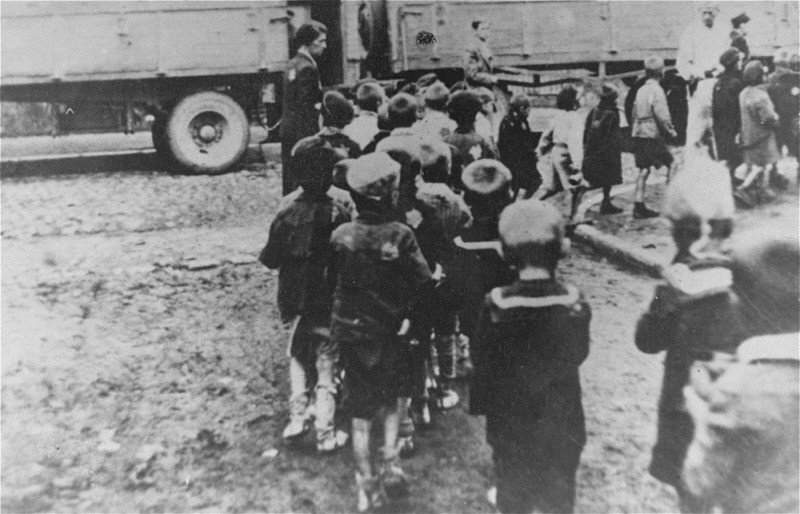
Plight of Jewish Children
During the Holocaust, some children went into hiding to escape Nazi persecution. With identities disguised, and often physically concealed from the outside world, these youngsters faced constant fear, dilemmas, and danger. Theirs was a life in shadows, where a careless remark, a denunciation, or the murmurings of inquisitive neighbors could lead to discovery and death.
When World War II began in September 1939, there were approximately 1.6 million Jewish children living in the territories that the German armies or their allies would occupy. When the war in Europe ended in May 1945, more than 1 million and perhaps as many as 1.5 million Jewish children were dead, targeted victims in the Nazis' calculated program of genocide.
As Warsaw ghetto historian Emanuel Ringelblum wrote in 1942,
“Even in the most barbaric times, a human spark glowed in the rudest heart, and children were spared. But the Hitlerian beast is quite different. It would devour the dearest of us, those who arouse the greatest compassion—our innocent children.”
Liberation from Nazi tyranny brought no end to the sufferings of the few Jewish children who survived the Holocaust. Many would face the future without parents, grandparents, or siblings.
Persecution
The Nazi persecution of Jews began in Germany in 1933. By 1939, the country's Jews had been systematically deprived of their civil rights and property and ostracized from the national community. German conquests in Europe after 1939 led to the implementation of antisemitic policies in the occupied territories. Though the pace and severity of persecution differed in each country, Jews were marked, vilified, and segregated from their neighbors.
In eastern Europe, the Nazis generally isolated Jews in ghettos, which often were established in the most desolate sections of a city or town. In western Europe, internment camps, many of which had been set up earlier to house refugees and enemy aliens, served as detention centers for Jews. Such policies of isolation aided the Nazis when they began mass shootings and deportations to the killing centers.
Death
Hitler made the decision in 1941 to carry out the systematic mass murder of Jews. Einsatzgruppen followed the German army into the Soviet Union in June 1941, and by the end of the year, murdered almost 1 million Jewish men, women, and children. That December, the Chelmno killing center began operation. During 1942, the Nazis established four more killing centers to carry out the gassing of Europe's Jews.

All Jews were targeted for death, but the mortality rate for children was especially high. Only 6 to 11% of Europe's prewar Jewish population of children survived as compared with 33% of the adults. The young generally were not selected for forced labor, and the Nazis often carried out “children's actions” to reduce the number of “useless eaters” in the ghettos. In the camps, children, the elderly, and pregnant women routinely were sent to the gas chambers immediately after arrival.
Liberation
Following the defeat of Nazi Germany, the world learned of the staggering human toll of the Holocaust. Few Jewish children survived. In killing centers and concentration camps across Europe, systematic murder, abuse, disease, and medical experiments took many lives. Of the estimated 216,000 Jewish youngsters deported to Auschwitz, only 6,700 teenagers were selected for forced labor; nearly all the others were sent directly to the gas chambers. When the camp was liberated on January 27, 1945, Soviet troops found just 451 Jewish children among the 9,000 surviving prisoners.
I was 17. I, I was free, but what it meant I wasn't sure.
George Salton
Soon after liberation, Jewish agencies throughout Europe began tracing survivors and measuring communal losses. In the Low Countries, perhaps some 9,000 Jewish children survived. Of the almost 1 million Jewish children in 1939 Poland, only about 5,000 survived. Most of these youngsters survived in hiding.
Critical Thinking Questions
- Why were children especially vulnerable to Nazi persecution?
- What risks, pressures, and motivations confronted rescuers when they tried to help children?
- What parts of childhood could a hidden child try to preserve?
- What challenges faced hidden children and their families after liberation?
- Do children continue to be especially vulnerable in times of upheaval?

